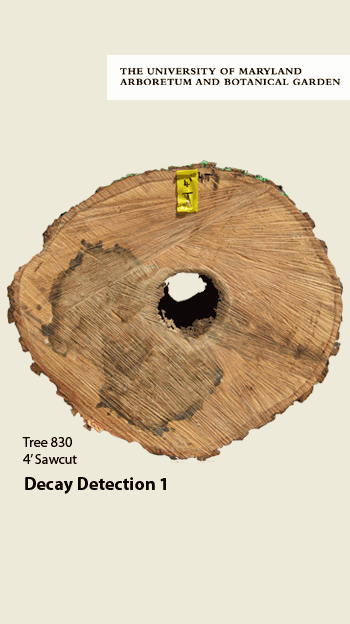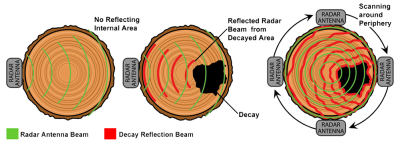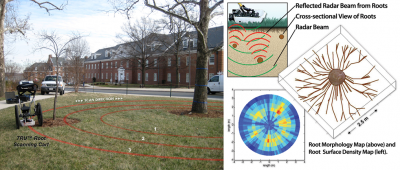The Campus Tree Radar Unit (TRUTM)

The UMD Arboretum uses ground penetrating radar (GPR)as a non-invasive method to analyze tree trunk structure, root health, and risk. The Tree Radar Unit (TRUTM) is a unique tree evaluation tool used to determine internal trunk structure and rooting patterns without the drilling or digging associated with conventional methods. UMD was one of the first university campuses to use this technology and conduct the tree equivalent of an MRI on at risk or significant trees and continues to be a leader in the use of this technology.
The TRUTM tree evaluation system is used to support our Campus Plant Inventory database, which uses standard arboricultural surveying and urban tree risk assessment methods.

The TRUTM works on tree trunks because a hollow or decaying trunk is an excellent reflector for detection by GPR. Data are taken on and around a tree trunk at several uniformly spaced above-ground heights to give a comprehensive view of the internal trunk structure.

It works on root systems because electromagnetic differences between tree roots and the surrounding soil provide the necessary contrast and reflection properties that are detected by GPR. Concentric circular scans around trees provide enough detail of root systems to map specific root locations as well as determine overall distribution and root system integrity, which is important for tree stability and health.

Link to TRU Website: Tree Radar
